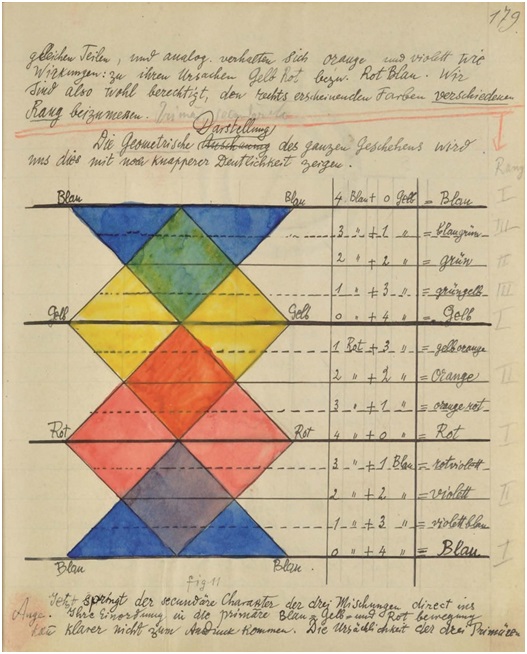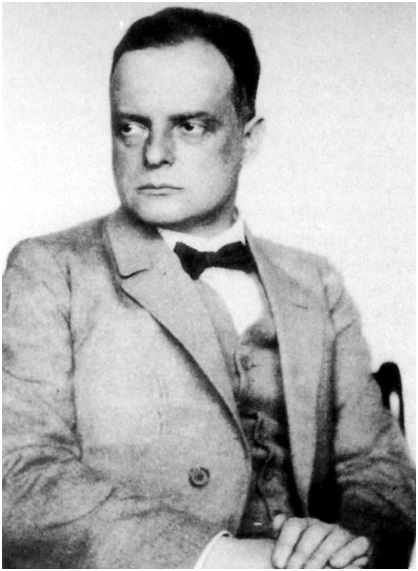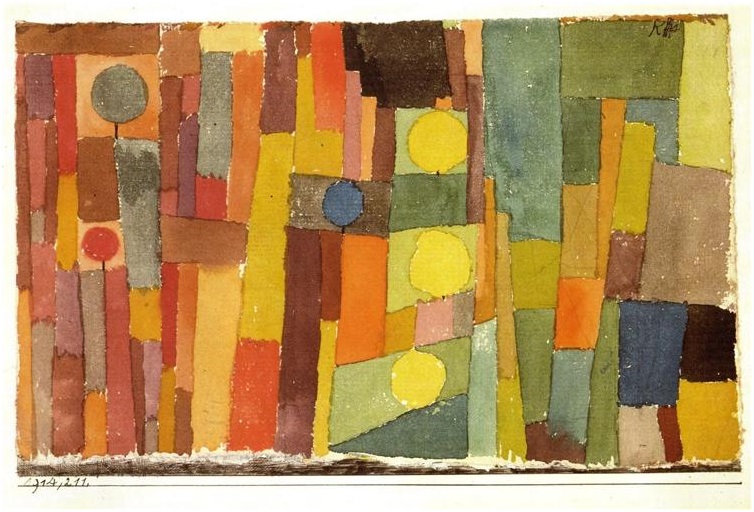Blog
Paul Klee & Bauhaus Design School
Bauhaus was a school for the arts, founded in 1919 by Walter Gropius. Gropius envisioned having a place where a variety of different art styles could be taught under one roof. Klee himself welcomed the conglomeration of different styles, stating " I also approve of these forces coming together if the result is achievement.” The Bauhaus was particularly influenced by art movements such as arts and crafts and art nouveau. Although it was primarily a school for the artistic practice, it also taught theoretical and intellectual approaches to art. Gropius hoped to provide a place where fine art and practicality could intersect.
Klee's appointment at the Bauhaus would prove to be a pivotal point in his career, and a move that would cement his reputation as one of the world's greatest modern artists. Klee originally applied for a teaching position with the Academy of Art in Stuttgart, but was rejected. He was then asked to teach at the Bauhaus, and started his position in 1921. Provided with two studios, Klee took the position of a master of "Form" teaching bookbinding, stained glass and mural painting workshops.

One of his most infamous lessons was about line drawing, something Klee was clearly proficient at. His Pedagogical Sketchbook opens with the quote, “An active line on a walk, moving freely, without goal," and went on to describe the different styles of line- from lines that circumscribe themselves to lines that contain fixed points. Klee would also encourage students to paint fish in an aquarium, in order to try and capture the essence of their movement, and asked them to draw the circulatory system, stating that the blood pulsing through the body was similar to the way art was created.
Klee taught at the Bauhaus until 1931, after which he took a position at the Düsseldorf Academy. However, after a newspaper article described him as "a typical Galician Jew," he was fired from his teaching job and forced to flee from Germany. This period was reflected in his arresting self portrait Struck From the List.
Who was Paul Klee?

Portrait of Paul Klee / Photo: Hugo Erfurth, 1927. Paul Klee was born in Switzerland on December 18, 1879. Klee's father was a teacher at the Bern State Seminary and Klee followed in his father's footsteps, becoming a prestigious violin player. At age 11, he received an invitation to play with the Bern Music Association, but despite his natural talent and parent's wishes for him to pursue a musical career, Klee abandoned music for art in his teenage years. He felt too inhibited by 18th and 19th century styles of music he was expected to play. On the contrary, as an artist Klee was free to explore and experiment with different styles.
Klee began his artistic career focusing on his drawing skills, studying in a private studio for two years. He went on to study at the Academy of Fine Arts in Munich and dabbled in experimental techniques but did not commit to any one style of art. After completing work for Alfred Kubin, who became one of Klee's earliest collectors, Klee met August Macke and Wassily Kandinsky, joining them on the staff of the almanac Der Blaue Reiter. Joining Der Blaue Reiter and subsequently exhibiting at their art shows exposed Klee to new ideas on color theory that would go on to influence his art. A trip to Tunisia soon after the 1912 exhibition further inspired him, and he wrote: "Color has taken possession of me; no longer do I have to chase after it, I know that it has a hold on me forever... I am a painter."

Paul Klee, In the Style of Kairouan (1914) After his return from Tunisia, Klee produced his first purely abstract piece, In the Style of Kairouan. Klee's career was put on hold after he was conscripted into World War I, first working as a soldier on the front, then moving to work for the aircraft maintenance company. After being transferred to work as a clerk at the Royal Bavarian flying school, he was able to continue painting. Even during the war Klee was able to exhibit his work, to much critical acclaim.
After the war, Klee became a teacher at the Bauhaus. During this period he also became part of a collective known as Die Blaue Vier, alongside Kandinksy, Lyonel Feininger, and Alexej von Jawlensky. Klee was forced to flee Germany with his family after Hitler's appointment as Chancellor, emigrating to Switzerland in 1933. It was around this time Klee was diagnosed with progressive scleroderma, an autoimmune disease which hardens the skin and organs. His later works reflected his impending death, seen in pieces such as Death and Fire which features a skull in the center surrounded by the word Tod (the German word for death). Klee died on June 29, 1940.





